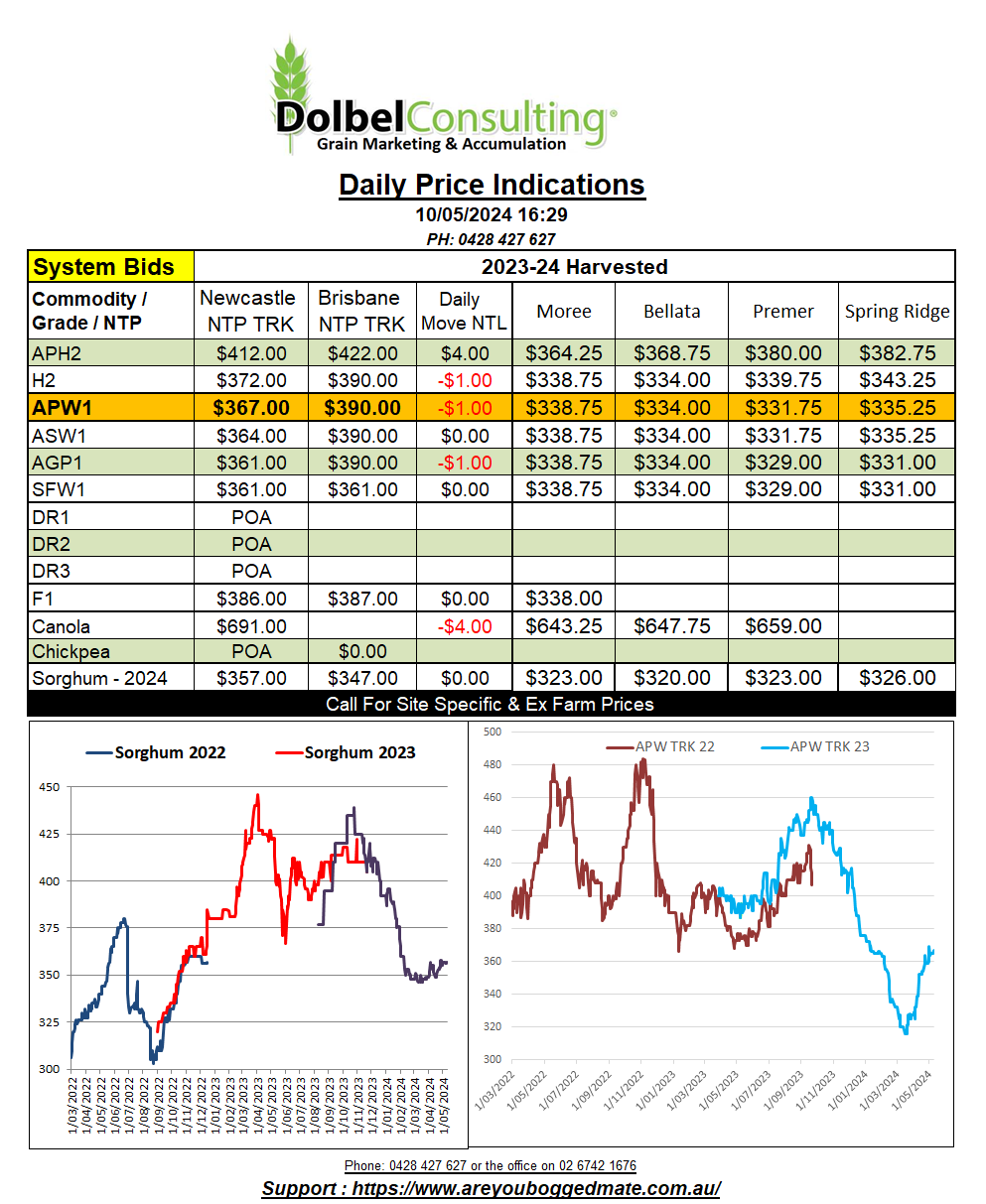10/5/24 Prices

Some of the flood pics and videos coming out of Rio Grande do Sul show an incredible amount of water flooding any low lying areas along the Jacui River. Much of the city of Canoas (pop 350k), north of Port Alegre is now submerged.
The bulk of the farming country is not along the east coast, it’s more across the NW of the state but the state itself does have a lot of agriculture spread across it. There were reports of flooding across the Santa Rosa region on the 1st and 2nd of May, this is in the NW of the state. This area is the major wheat growing region, producing around 39% of the Brazilian wheat crop, which is sown between May & June.
The 14 days precipitation map for Rio Grande do Sul shows between 200mm and 400mm has fallen across a wide area of the state, including much of the NW. Falls over the last 7 days were heaviest across the NW. The 7 day forecast shows rainfall may persist but the heaviest falls should be more to the east but weekly totals of 50 – 100mm are possible across the NW of the state.
The impact of the flooding will affect soybean, corn and wheat. What soybeans that are left to harvest would likely now be destroyed by the persistent rain but harvest was nearing completion in most parts. With wheat sowing just getting under way we may see significant planting delays are abandonment this year. This would put additional pressure on imports of wheat from Argentina or the USA.
Rainfall across Argentina over the last 14 days has generally been beneficial to wheat production, the forecast there also encouraging.
The frost damage in Russia isn’t getting a lot of air play. Analyst more closely involved in the region seem to be playing down the damage to winter wheat. Frost damage is often hard to detect for up to 7 – 10 days after the event. We may see more from this frost event next week. For now the markets were generally focused on Brazil and technical trade prior to tonight’s WASDE report.
